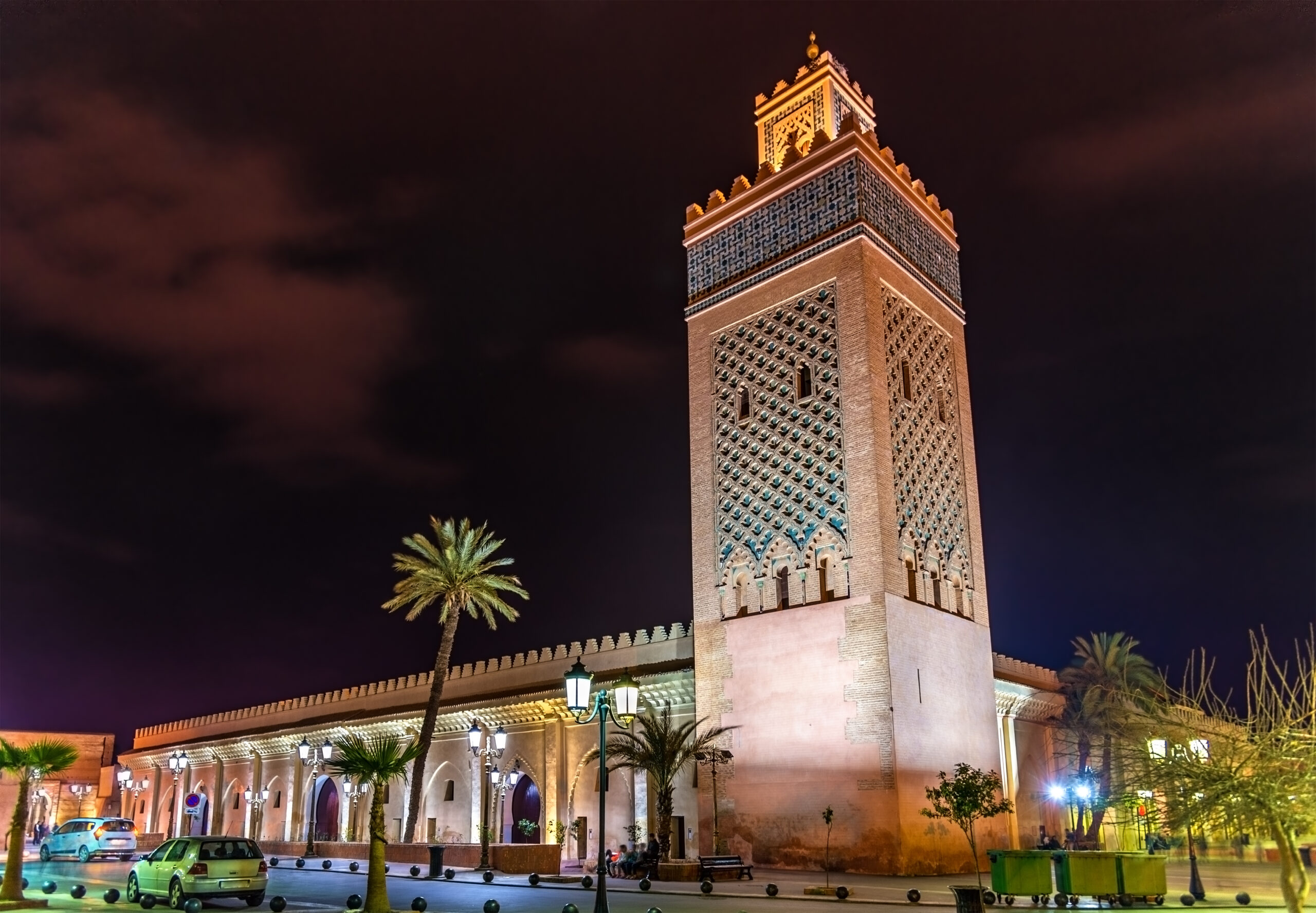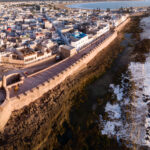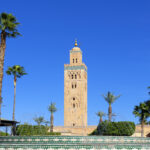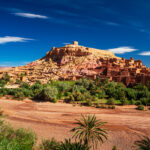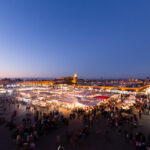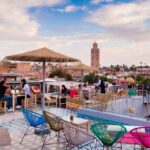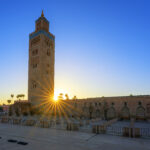Marrakech, known as “The Red City” of Morocco, brings together history and elegance. The city’s buildings, painted in a light shade of red, offer a unique charm that has captivated visitors for centuries. This vibrant color not only stands out but also holds historical significance, dating back to the 12th century during the reign of the Almohad dynasty. Marrakech Architecture reflects a blend of cultural influences and historical events. The towering ramparts, majestic mosques, serene gardens, and grand palaces showcase the city’s rich heritage.
Historical Roots of Marrakech
Youssef ben Tachfine, the leader of the Almoravid dynasty, founded Marrakech in 1062. The city quickly became a center of power and culture. The Almoravids established religious schools called Medersas and expanded their influence across Morocco. Over the centuries, different dynasties, including the Almohads, Saadians, and Alaouites, shaped Marrakech. Each dynasty contributed to the city’s architectural landscape, leaving behind diverse and stunning structures.
The Almoravid and Almohad Influence
During the Almoravid era, Marrakech became the capital of Morocco. This period marked the beginning of the Palmeraie (Palm Grove) plantation, an expansive area of palm trees that still exists today. Youssef Ibn Tachfine’s son played a significant role in fortifying the city by constructing the Big Walls of Marrakech. These walls stretch over 20 kilometers and protected the city from potential attacks. They still define the boundaries of Marrakech’s Old City, known as the Medina.
One of the most iconic architectural marvels from this era is the Koutoubia Mosque. Originally called “Jama’ al-Koutoubiyyin,” it was built in 1150. The mosque’s minaret, standing at 77 meters tall, serves as a testament to Almohad architecture and symbolizes the city’s Islamic heritage. The minaret’s design inspired other structures, such as the Hassan II Mosque in Casablanca and the Giralda in Seville, Spain. This reflects the Almohad Empire’s reach into northern Andalusia.
The Saadian Contributions
The Saadian dynasty, which ruled in the 16th century, is renowned for its opulent architectural style. The Saadians left behind some of the most beautiful monuments in Marrakech. One of these is the Medersa Ben Youssef, a Coranic university built in 1565. This structure showcases Moroccan decorative art, featuring intricate geometric patterns and detailed carvings.
Another significant contribution from the Saadian era is the El Badii Palace. Sultan Ahmed Al Mansur Dhahbi built it in 1578 to celebrate his victory over the Portuguese army. This palace symbolized the Sultan’s power and wealth, designed to impress both subjects and foreign dignitaries. Although much of the palace now lies in ruins, its vast courtyard, surrounded by high walls and orange trees, still hints at its former grandeur.
The Saadian Tombs, another architectural gem from this period, offer a glimpse into the past. Complex stucco work, colorful tile mosaics, and elaborate chandeliers adorn the tombs. Abstract geometric patterns and arabesque motifs decorate the vaulted rooms, creating an atmosphere of majestic beauty. The Saadian Tombs stand as a must-visit site in Marrakech.
Emblems of Marrakech Architecture
Marrakech is home to several iconic structures that symbolize the city’s rich architectural heritage. These buildings serve as historical monuments and major attractions for tourists and visitors.
Koutoubia Mosque
The Almohad dynasty built the Koutoubia Mosque in the 12th century. Its minaret, reaching 77 meters high, remains the tallest structure in Marrakech. The mosque’s design, with its decorative brickwork and keystone arches, exemplifies Moorish architecture. Local regulations ensure that no new construction in the city surpasses the height of the Koutoubia’s minaret, preserving its dominance in the skyline. The mosque’s history intertwines with the city’s development. The Almohads rebuilt it after deeming the original structure, built by the Almoravids, improperly oriented toward Mecca.
Saadian Tombs
The Saadian Tombs offer a breathtaking example of Marrakech’s rich history and culture. The Saadians built these tombs in the 16th century, showcasing their power and greatness. The tombs’ architecture features complex stucco sculptures, colorful tilework, and lavish mosaics. Sophisticated chandeliers adorn the ceilings, while scenes from Islamic mythology and history decorate the walls. The Saadian Tombs create an atmosphere of majestic beauty, making them a stunning sight to behold.
El Badii Palace
The El Badii Palace, once a jewel of Islamic art, was built in 1578. Sultan Ahmed Al Mansur Dhahbi commissioned it to celebrate his victory over the Portuguese. The palace’s construction drew inspiration from the Alhambra in Granada, Spain. The design aimed to showcase the Sultan’s wealth and power. Although much of the palace’s riches have been stripped away, the vast courtyard, high walls, and remaining gardens still convey a sense of its former splendor. The palace’s central basin, once home to a large fountain, and the pavilions that flanked it, remain reminders of the grandeur that once existed here.
Bahia Palace
The Bahia Palace, meaning “brilliance” in Arabic, ranks as one of the best-preserved historical sites in Marrakech. The palace, built between 1866 and 1867, covers two hectares in the heart of Marrakech’s Medina. With 150 rooms, including a separate harem section, the Bahia Palace stands as a masterpiece of Moroccan architecture. The palace’s design includes courtyards, gardens, and patios filled with cypress, jasmine, orange, and olive trees. Fountains add to its serene atmosphere. The palace’s intricate details and harmonious layout make it a must-see monument in Marrakech.
Medersa Ben Youssef
The Medersa Ben Youssef, built between 1564 and 1565 by Sultan Abdullah Al-Ghaleb Assaadi, serves as an architectural gem in the heart of Marrakech’s Medina. For centuries, this religious school stood as a center of learning. Luxurious geometric and floral motifs adorn the Medersa’s walls. Cedar wood doors and ceilings showcase the artistic precision of the time. The central patio offers visitors a moment of peace amid the bustling city.
Contemporary Marrakech Architecture
While steeped in history, Marrakech also embraces contemporary architecture that blends tradition with modernity. The Yves Saint Laurent Museum, which opened in 2017, ranks as one of Marrakech’s most famous contemporary sites. The museum’s architecture draws inspiration from Moroccan colors and designs. It pays homage to the city’s rich heritage while incorporating modern elements. This blend of old and new demonstrates Marrakech’s ability to evolve while preserving its cultural identity.

